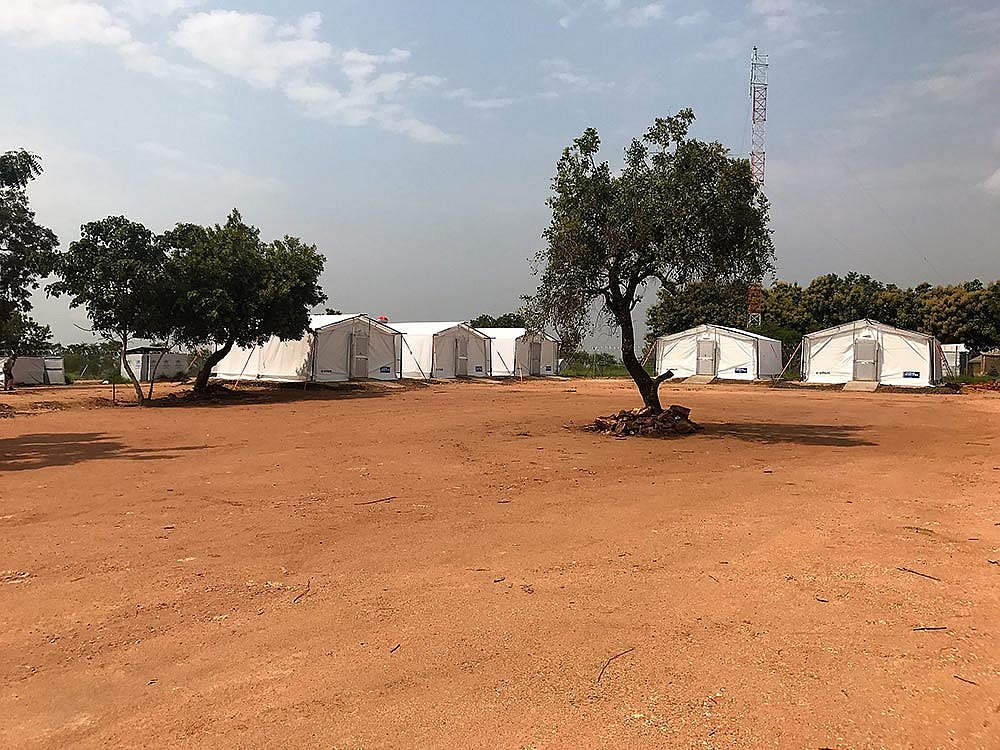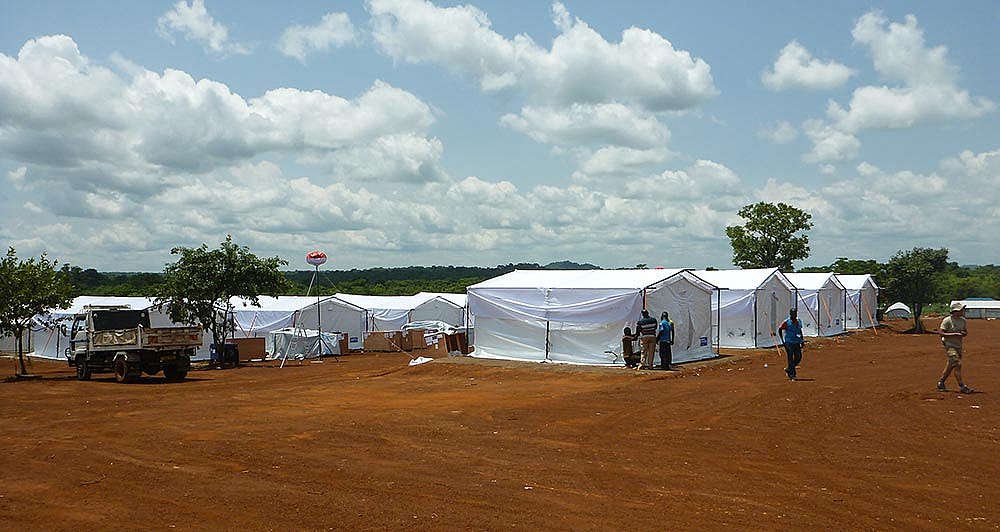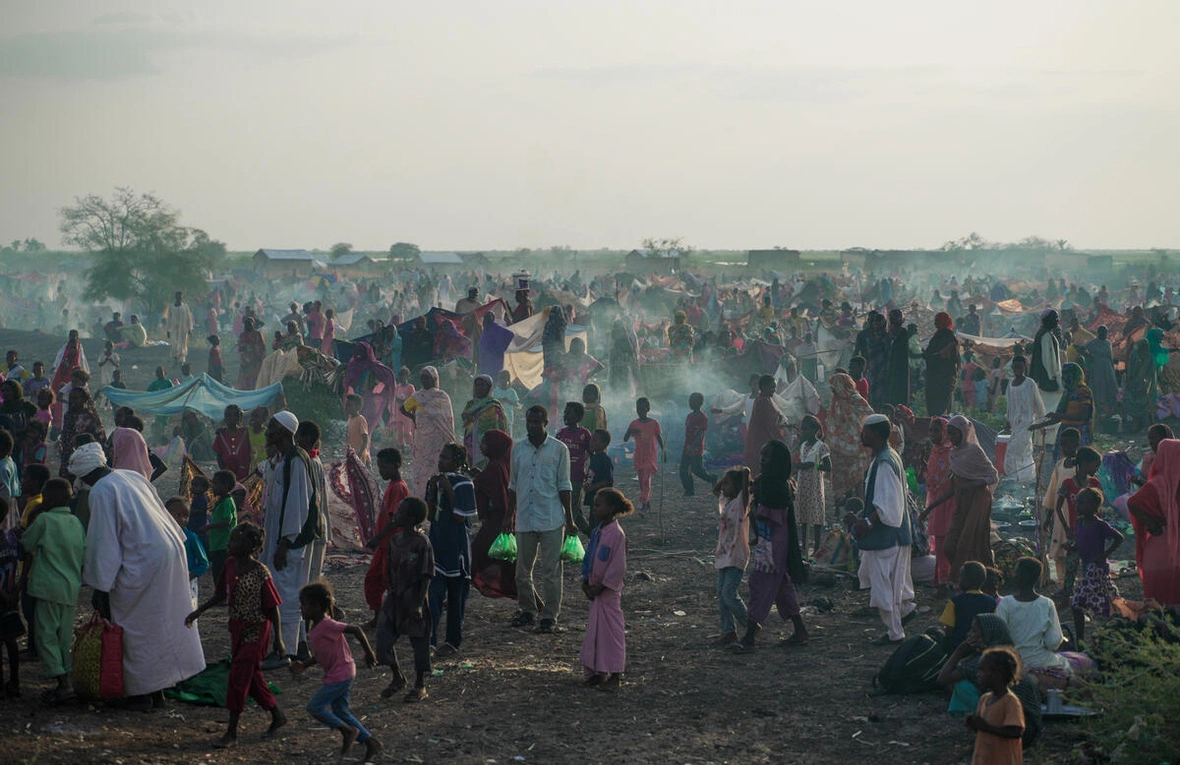In 2017, as conflict intensified in South Sudan, hundreds of thousands of Sudanese fled to Uganda, seeking safety and stability. In response, the International Humanitarian Partnership (IHP) launched an emergency project to support the United Nations High Commissioner for Refugees (UNHCR) and Ugandan government partners in managing the influx of refugees in northern Uganda. This project involved the rapid establishment of operational facilities in the refugee settlements, based on the IHP Base Camp model, tailored for remote, resource-limited environments.
The IHP setup included two emergency sites offering office and accommodation facilities, a permanent office structure, and a contingency stock intended to support the expansion of new refugee settlements. The setup combined portable, adaptable infrastructure with fixed construction elements to ensure stability and durability. This approach enabled UNHCR and its partners to operate closer to affected populations, allowing for more efficient and coordinated humanitarian responses.


Teams from the Swedish Civil Contingencies Agency (MSB) and the Danish Emergency Management Agency (DEMA) managed the deployment, with MSB as the lead agency. Equipment and infrastructure were transported to designated sites, improving the capacity of on-ground agencies to deliver aid and essential services to those displaced by the conflict. The collaborative effort highlighted IHP’s commitment to delivering practical, flexible support in challenging crisis situations, enhancing the coordination and reach of humanitarian aid in Uganda’s refugee settlements.
Cover Photo Credit: UNHCR/Ala Kheir



